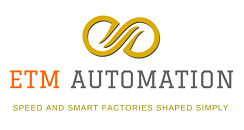Breakthrough in deep learning
Until recently, if people were talking about artificial intelligence (AI), it was likely in the context of science-fiction. But these days, everyone from schoolkids to CEOs are wondering what kind of changes AI has in store for us in the coming years.
In fact, kindergarten students ask the same questions as CEOs, such as,
“Are we going to have AI teachers?”
“What kind of jobs are we going to have in the future?”
While the emergence of real-world AI can seem like a relatively new thing, it’s been brewing for decades and has only now started being a major business tool thanks to a breakthrough in deep learning.
The story of how we got to deep learning stretches back to the 1950s, when researchers like Marvin Minsky and John McCarthy had a goal of imbuing computers with human intelligence. In the early eighties, there were two camps working toward this: the rule-based people and the neural network folks.
Rule-based AI believed that the best results would come from programming machines with one rule at a time, such as “cats have triangular-shaped ears.”
The neural network camp, on the other hand, preferred to let the machine learn on its own, much as humans do, through experience. This way, a machine can analyse a picture of a cat and respond incorrectly, but this error will become data that it learns from.
What neural network-based AI really needed was loads of data to analyse and faster computing power, which finally arrived in the mid-2000s. With the improved conditions, AI researcher Geoffrey Hinton was able to finally add the right amount of layers to the “neurons” and essentially multiply the AI processing power to a whole new level.
When this happened, neural network was rebranded to deep learning. The big breakthrough was made public at a 2012 contest when Hinton’s new AI algorithm blew away the competition at visual recognition.
Suddenly, AI was capable of processing complex problems, recognizing patterns and coming up with amazing results. It was clear that this technology was now applicable to a whole array of everyday functions, including visual and audio recognition, making complex financial decisions and even driving a car.
Thanks to deep learning, an AI revolution is on the way.
The content had been extracted from the book “AI Superpowers” by “Kai-Fu Lee”.
